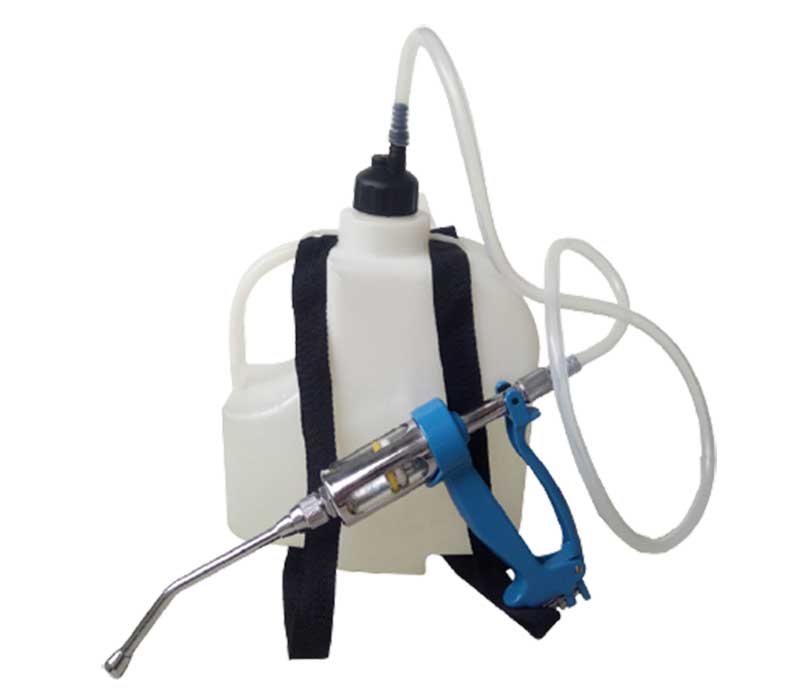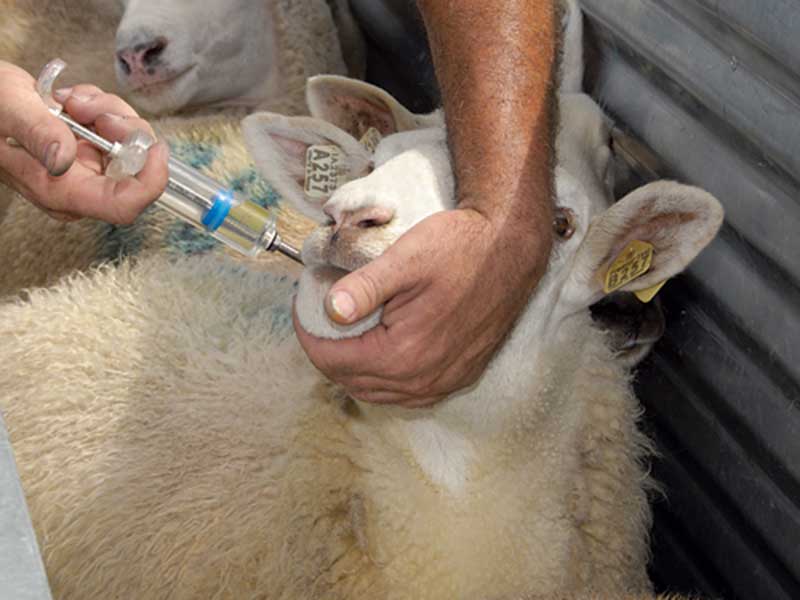How do I drench sheep, goats or other livestock?
- 25th January 2021
Internal parasites can be a significant problem for livestock farmers. Liver fluke and worms cause financial burden due to treatment costs and production losses. Not to mention the enormous impact they have on the animal's welfare.
What is drenching?
The word drenching can have a few different meanings. In this article, we are referring to the administering of fluid orally meaning into the month of an animal.
Drenching can be used on other animals besides sheep and goats. Drenches are available for horses, cattle, dogs, cats, and other animals.
Types of oral drenches.
Drenches are available in two main types: Broad spectrum and narrow spectrum.
Broad spectrum drenches are designed to treat a wide range of internal parasites in livestock and a narrow spectrum drench will treat a limited range of internal parasite types.
Before you buy a drench!
Using the most appropriate drench for the animal will increase its effectiveness. The first thing to do is to have a faecal worm egg count test carried out. Numerous organizations are available that can perform this test and inform you of the best course of action and advise give advise on the best drench to use.
Always check the withholding period of the drench, especially if they are going to be used for meat.
Equipment.
The drench gun that you use will depend on how many animals you have to drench. If you only have a small number of animals, you may only need a single dose gun but if you have a fair number of animals you may prefer to use an auto dosing one. An auto-dosing gun automatically refills the gun as the trigger is released making the operation a lot quicker. If you use an auto-dosing gun, it is normally used with a back-pack that is filled with the drench.
The other handy piece of equipment is a holster which can be worn around the waist. This enables you to keep your hands free if needed.

Before drenching.
Always check the expiry date on the drench. The older the drench is, the less effective it is going to be.
Always read the label for safety information and dosage rate.
Calibrate the drench gun to ensure the correct dose is given.
Clean equipment before and after drenching. Residue from the drench used can make the drench gun “gum” up making it deliver the incorrect dose or no dose at all.
Weigh your animals before drenching. This is important to deliver the correct dose to the animal. If an animal is given a dose that is too high, then it could build up an immunity to the drench being used therefore making it less effective or not effective at all. Drench dose should be calculated on the heaviest animal. If there is a big difference in weights, the animals should be separated into different weight groups and drenched appropriately.
How to drench sheep and goats.
Before you dose the gun with the drench, ensure that it is shaken thoroughly.
Having a good set of yards with a race is going to be easier on you and the animal. A race can be a purpose-built one or a simple one made from gates. Depending on whether you prefer to work with your animals from outside of the race or be in the race with them is a personal preference. Often, people that are less experienced find it easier to be in the race with the animal.
The easiest way for beginners is to enter the race once the animals are in there and straddle the animal. Then with one hand under the head, turn the head slightly to one side, insert the nozzle of the gun into the corner of the mouth and administer the dose. Do not place your fingers into the animal's mouth as they can unintentionally bit down on your fingers.
After you have administered the drench, hold the animal's head for a few seconds allowing it to swallow the drench. If you release the animal before it has swallowed, it may spit the drench out.

After drenching.
The best course of action is to leave the animals in an enclosed area with access to water for a while. The instructions on the drench would normally indicate what the best time is.
After you have drenched your animals, it is preferable to place them onto clean pasture if it’s available. Doing this will help reduce the reinfestation rate.
Clean up all equipment used with warm water. Do not use soap as this can damage the seals in the gun.
